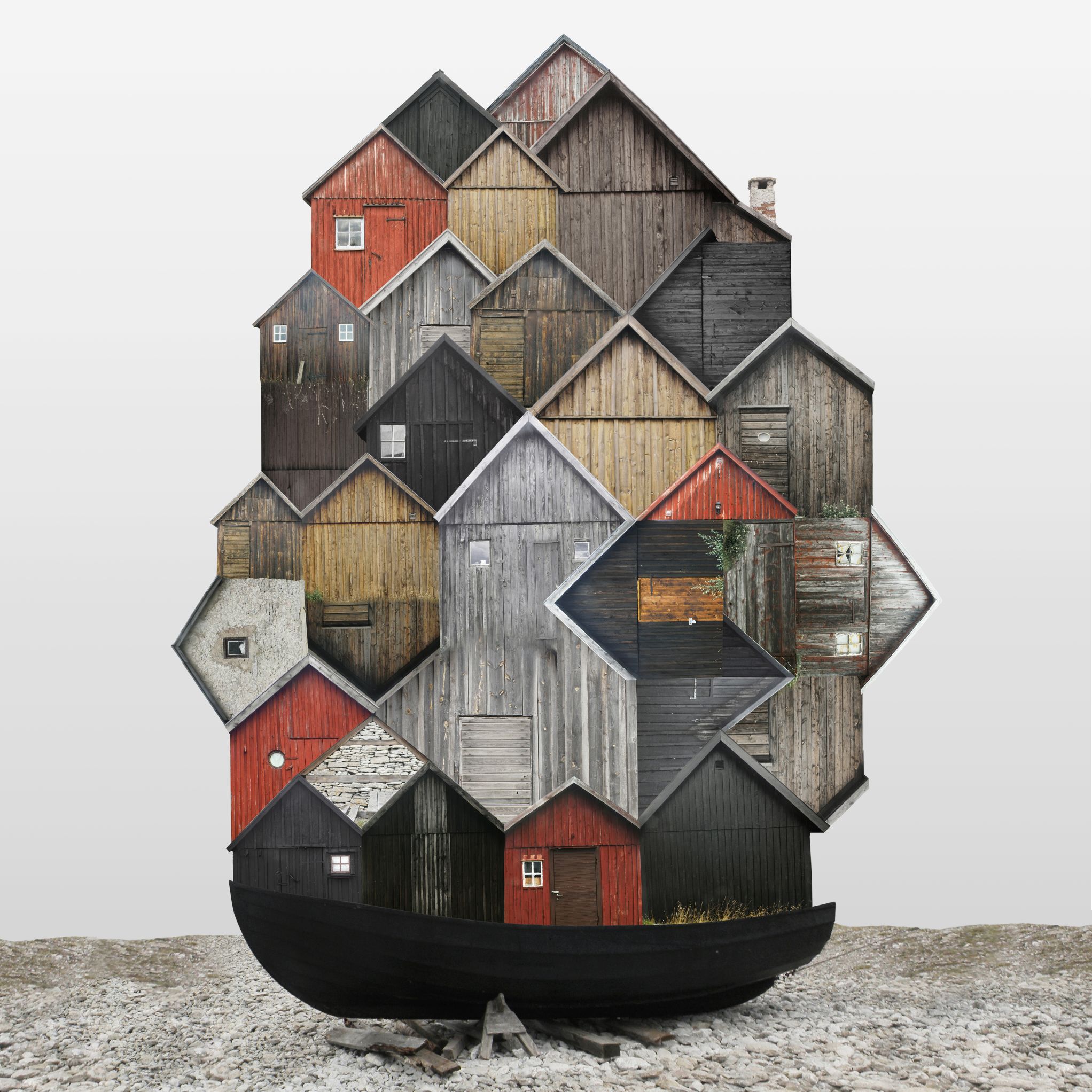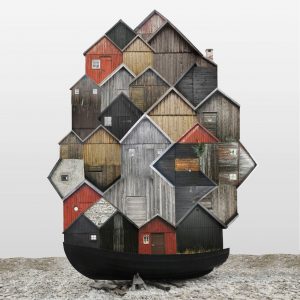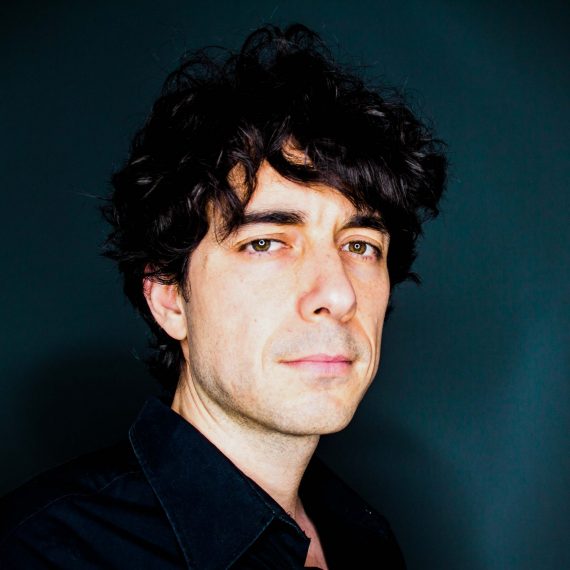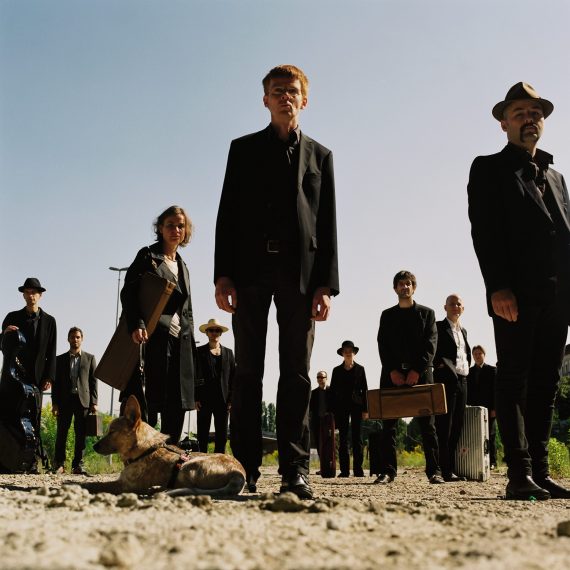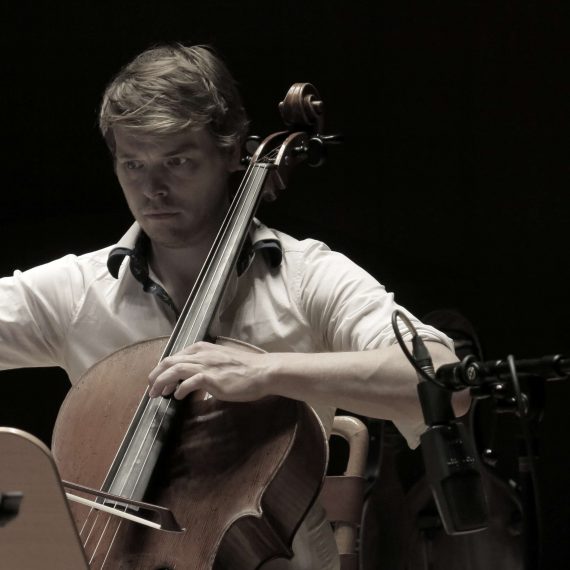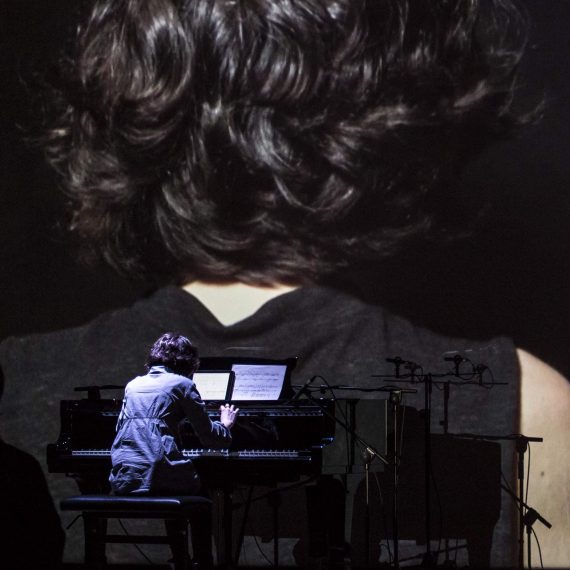HIDEOUTS
“A staggering wealth of ideas drawn with a fineliner.
There is always a fine balance between clarity and secrecy.
Rodríguez Valenzuela’s music is great art.”
Enno Poppe

Toccata à l’acte
for harpsichord, delay pedal and music box (2015) · 04:21
Lluïsa Espigolé
64 daily self-portraits/micro-variations on a motive of Brahms
for violin, viola, cello and piano (2016-17) · 10:45
Ensemble Mosaik
Ungebetenes Spiel
for piano and e-bows (2010) · 07:57
Lluïsa Espigolé
BUY ALBUM
HD Digital: Surround 5.1 + Stereo 24bit 96kHz
Digital: Stereo 16bit 48kHz

HIDEOUTS
Hideouts alerts us to a potential risk in attempting to understand the music of Manuel Rodríguez Valenzuela: that of mistaking his methodology for his thinking. Given his remarkable imagination, it is sometimes easy to focus on the most obvious aspects of his music (invented objects, ingeniously prepared and amplified instruments, or an imaginative manipulation of sound) and to pass over the fact that all of this is inspired by a unique, intimate manner of thinking. Listening to Hideouts is an excellent way to go deeper into the work of this composer, since his most important features –idealism in the smallest detail, and the value he gives to the concept of listening as evidenced in quotations, cultural intrusion, intertextuality and reflection upon the context– can be appreciated in pieces employing seemingly different methods.
At the time of writing these notes, Manuel Rodríguez Valenzuela has three pieces for solo keyboard (piano or harpsichord): Ungebetenes Spiel, Toccata à l’acte and Le piano engloutie, the first two being included in Hideouts. All three works open with a quotation from a classic piece of music, but the significance, reach and development of the quotations vary in each case. Ungebetenes Spiel, written in 2011, begins with a literal exposition of Beethoven’s Bagatelle in A major, Op. 119, No. 10. The use of quotation is not anecdotal here. Rather than a momentary presence from another world, it expresses the act of considering and pondering –in short, of listening to– that other world. The piece develops and displays Rodríguez Valenzuela’s vision and the transformation he effects upon the Bagatelle, with small elements taking it as their point of departure and reminding us of it; at the same time, the composer explores the piano at its most percussive, as captured exquisitely in Neu Records’ minutely detailed recording. This demonstrates one of the composer’s most fundamental traits. Manuel Rodríguez Valenzuela is an avid listener for whom the exercise of listening, far from being a creative limitation, is a fertile engine that sets in motion new ideas. The known is a point of departure, not the ultimate aim; only one who listens has something to say. All of which implies the question of contextualisation. Rather than creating a continuity of sound between the initial quotation and its development, the contrast is made evident. Ungebetenes Spiel does not disguise the extraneous nature of the quoted fragment; it celebrates it. This conscious play of contextualisation and decontextualisation, this simultaneous inclusion of different planes, is also reflected in the fragment constructed by different long notes generated by various e-bows** placed directly inside the body of the piano. A fragment that, in spite of having been introduced little by little, has a very significant role in terms of listening to the piece, even constituting an additional plane. At the work’s end –specifically devised for the disc– everything that has so far been recounted is elevated, not in a written quotation as may be imagined, but through the direct inclusion of a recording by Arthur Schnabel of Beethoven’s Bagatelle in G Minor, Op. 119, No. 11 –one of the earliest recordings of the piece– as an unequivocal declaration of the aforementioned principles.
Toccata à l’acte, written in 2015, sets a new level of intertextuality. The piece takes its departure from Sonata K. 141 by Domenico Scarlatti and is written for amplified piano or amplified harpsichord (the latter being the most appropriate option), delay pedal and a motorised music box that plays the melody from the sonata. Following an exposition of the first bars of the original sonata, the score introduces what at first seem to be wrong notes, interruptions, and small loops and repetitions that transform the significance of the piece from which they originate. These procedures are reminiscent of the work of the experimental filmmaker, Martin Arnold in works such as Passage à l’acte, from where Rodríguez Valenzuela takes the name of his piece.
The interferences are, to begin with, included in the score, but they are soon augmented by the use of the delay pedal –which records, reproduces and superimposes a number of short fragments– and by the motorised music box. These inclusions question the concept of context once again: perceived initially as extraneous bodies, they gradually become part of the new environment and end up establishing themselves as the centre of the piece. The harpsichord is the instrument of choice in order to go more deeply into this aspect: the very mechanism of the instrument, which is so characteristic, takes its place in the sound fabric like a noise that has been welcomed into the musical landscape, as the inclusion of something external. This additional plane, this other level that also has a place in the act of listening, is gradually amplified and built up over the course of the composition, to the point at which the performer ends up treating the harpsichord as a percussion instrument (symbolically completing the above-mentioned inclusion). The same approach is seen again and again: the integration and observation of the external, from the exercise of the act of listening as idea. We are listening to the listening of Manuel Rodríguez Valenzuela. In Toccata à l’acte there is an excellent example of a recording that demonstrates another facet of Rodríguez Valenzuela’s work: a heightened degree of idealism, the need for precision in certain ideas in order for them to make sense. The ambitiousness of these ideas does not derive from an ostentatious urge to make them visible, but rather from the composer’s honest attention to what is intimate; to all that which is so hidden and innermost that his only option is to be extremely demanding on himself. In this case we refer to the editing of some of the delays: many of them are designed to be produced by the action of the pedal, but in the studio they were recorded meticulously one by one, in order to reflect their motivating idea with utmost precision; a precision for which the recording process offers the perfect environment in which to excel.
Since 2011, the composer has continued to develop the different, above-mentioned characteristics in pieces where instruments are used in increasingly complex ways (instruments are frequently prepared and augmented, sometimes by electronic means), while highly demanding logistics turn productions of his music into real challenges. The creation, preparation and rehearsal of such scores increasingly defy the composer himself. 64 daily self-portraits/micro-variations on a motive of Brahms (written in 2016 and revised in 2017) for piano quartet, grew out of his intention to overcome, with the aid of two self-imposed limitations, this often distressing situation. The first limitation: simplify the logistics. The use of instruments would be relatively traditional with no additions, augmentations nor extraneous objects required in their preparation. The piece is not without extended techniques or an imaginative use of instruments; in many other composers some of the timbres achieved would be startling, but in the context of the music of Manuel Rodríguez Valenzuela they might even be considered restrained. This particular characteristic of the 64 daily self-portraits/micro-variations on a motive of Brahms allows us to observe the composer’s thinking in a different relationship to instrumentation; and it helps prevent us from confusing his attention to that personal idealism with a simple exploration of sound in relation to objects or extended instruments. The second limitation for writing the piece was that the work would not be planned in advance, but that for a little over two months the composer would write a self-portrait each day, in some cases of minimal duration, almost in the style of a diary; a similar methodology to that of the daily self-portraits produced by Bryan Lewis Saunders. Both limitations can be said to respond to a search for honesty in the creative process.
The simplifying of instrumentation, and the need for a more direct, less programmed form of composition leads to the elimination of intermediate steps between the composer and the object of his creation, thus, in a certain way, placing himself naked before a mirror. If, previously, we mentioned that Rodríguez Valenzuela transformed the exercise of his listening into the centre and principal element of his composition, in this case he converts his relationship to creation, together with the manner he understands and responds to this situation, into what motivates the piece. This has important consequences, the loss of the concept of traditional narrativity being the most notable. Given that many of these tiny fragments have been written without a previous plan, the order of performance can be freely chosen according to the preference of the performer, without the need to follow the chronological written order. In fact, hearing the work produces a marked sense of experiencing different snatches of music that are not necessarily organised in a linear relationship or with evident causality but which do exist in relation to a whole. This specific way of developing the creative process does not, however, prevent us from observing previously mentioned characteristic traits; the self-portraits are based on a motive from the Andante of Brahms’ Piano Quartet No. 3 in C minor (Op. 60). This is particularly significant given that each of the fragments, created as something intimate and with the aim of providing an honest personal portrait, cannot avoid, in their turn, being a variation of something already known, a listening to a pre-existing motive. The act of listening is a mirror: attention turned towards the outside is matched by an inner development; to look at the world is to create a world of one’s own.
Luis Codera Puzo
Composer, curator, performer
** e-bows are small electromagnetic devices, originally designed to be used with electric guitars, that when placed upon the strings (in this case of the piano) causes them to vibrate.
HIDEOUTS
Hideouts nos previene de uno de los posibles errores al intentar entender la música de Manuel Rodríguez Valenzuela: confundir su pensamiento con su metodología. Debido a su llamativa imaginación, a veces es fácil concentrarse en los aspectos aparentes de su música (objetos inventados, instrumentos ingeniosamente preparados y ampliados, manipulaciones imaginativas del sonido) y descuidar que todo ello está animado por una forma de pensar única e íntima. Hideouts es un excelente trabajo para profundizar en los rasgos del compositor, ya que sus principales características –un idealismo minucioso y la importancia de la idea de escucha, que adopta la forma de citas, de intrusión cultural, de lo intertextual o de reflexión sobre el contexto– pueden apreciarse en obras de procedimientos aparentemente distintos.
En el momento de escribir estas notas, Manuel Rodríguez Valenzuela tiene en su haber tres piezas para teclado solo (piano o clave): Ungebetenes Spiel, Toccata à l’acte y Le piano engloutie; las dos primeras están presentes en Hideouts. Las tres obras se inician citando una obra clásica pero el significado, el alcance y el desarrollo de esa cita varían en cada una de ellas. Ungebetenes Spiel, escrita en 2011, empieza con la exposición literal de la Bagatela op. 119 n. 10 de Beethoven. El fenómeno de la cita no es aquí anecdótico: más que una presencia puntual de otro mundo, es una manifestación del ejercicio de reflexión y ponderación –en definitiva, de escucha– sobre ese otro mundo. La pieza desarrolla y muestra la mirada y la transformación de Rodríguez Valenzuela sobre la bagatela, con pequeños elementos que parten de y nos recuerdan a ella, y explora además el lado más percusivo del piano, exquisitamente capturado por la minuciosa estética fonográfica de Neu Records. Esto muestra un rasgo fundamental del compositor: Manuel Rodríguez Valenzuela es un oyente ávido para quien el ejercicio de la escucha, lejos de suponer un límite creativo, es un motor fecundo que articula nuevas ideas. Lo conocido es un punto de partida, no una meta: solo aquel que escucha tiene algo que decir. Todo ello implica la cuestión de la contextualización. Lejos de establecer una continuidad sonora entre la cita inicial y su desarrollo, el contraste se evidencia. Ungebetenes Spiel no esconde la naturaleza de la cita como elemento extraño: la reivindica. Este juego consciente de contextualización y descontextualización, esta inclusión simultánea de diferentes planos, tiene también su reflejo en el fragmento construido con diferentes notas largas estimuladas por varios e-bow** colocados directamente dentro de la caja del piano. Un fragmento que, a pesar de haber sido introducido poco a poco, tiene un papel considerablemente distinguido en la audición de la pieza, constituyendo incluso otro plano adicional. Todo lo dicho anteriormente se sublima en el final de la obra –expresamente diseñado para el disco– que consiste ya no en una cita escrita sino en la inclusión directa de una grabación de Arthur Schnabel de la bagatela undécima del op. 119 –una de las grabaciones más tempranas que existen de la pieza– a modo de inequívoca declaración de los principios que hemos detallado.
Toccata à l’acte, escrita en 2015, establece un nuevo nivel de intertextualidad. La pieza parte de la Sonata K. 141 de Domenico Scarlatti y está escrita para piano o clave amplificados (esta segunda opción mucho más apropiada), pedal de delay y una caja de música motorizada con la melodía de la propia sonata. Tras una exposición literal de los primeros compases de la sonata original, la partitura introduce lo que inicialmente pueden parecer errores, interrupciones y pequeños bucles y repeticiones que transforman el significado de la pieza de la que parten. Estos procedimientos recuerdan al trabajo del cineasta experimental Martin Arnold en obras como Passage à l’acte, de donde Rodríguez Valenzuela toma el nombre.
Las injerencias están inicialmente escritas en la partitura, pero pronto serán ampliadas por el uso del pedal de delay –que graba, reproduce y superpone algunos fragmentos cortos– y por la caja de música motorizada. Estas inclusiones cuestionan de nuevo el concepto de contexto: inicialmente percibidas como cuerpos extraños, pasan a formar parte poco a poco del nuevo escenario y acaban convirtiéndose en el centro de la pieza. La elección del clave es idónea para profundizar en este mismo aspecto: el propio mecanismo del instrumento –tan característico– está presente en el sonido como un ruido que ha sido aceptado en el terreno de lo musical, como la inclusión de algo externo. Este plano adicional, este otro nivel que también tiene lugar en la escucha, se amplifica y diseña paulatinamente durante la composición, hasta el punto en que la propia clavecinista acaba por utilizar el clave a modo de instrumento de percusión (lo que simbólicamente completa la mencionada inclusión). La misma aproximación vuelve una y otra vez: la integración y consideración de lo externo, del ejercicio del acto de escuchar como idea −estamos escuchando la escucha de Manuel Rodríguez Valenzuela–. En Toccata à l’acte hay además un excelente ejemplo fonográfico que manifiesta otro de los rasgos de Rodríguez Valenzuela: su elevado nivel de idealismo, la necesidad de precisión de ciertas ideas para que tengan sentido. La ambición de estas ideas no proviene de una exageración ostentosa hacia lo visible sino de la atención honesta a lo íntimo, a todo aquello que está tan escondido y cercano que no tiene más remedio que ser extremadamente exigente. Se trata en este caso de la edición de algunos de los delays: muchos de ellos deberían ser producto de la acción del pedal, pero en la grabación han estado registrados meticulosamente por separado, para así poder reflejar con precisión la idea que los motiva, una precisión que encuentra en la grabación discográfica el escenario perfecto para sublimarse.
Desde 2011 las diversas características que hemos comentado se van desarrollando en la producción del compositor en piezas con usos instrumentales cada vez más complejos (abundan las preparaciones y ampliaciones de los instrumentos, también con medios electrónicos) y logísticas muy exigentes que convierten las producciones de su música en un verdadero reto. La elaboración, preparación y ensayo de tales partituras desafían también cada vez más al compositor. 64 daily self-portraits/micro-variations on a motive of Brahms (escrita en 2016 y revisada en 2017) para cuarteto con piano, nace con la intención, gracias a dos limitaciones autoimpuestas, de superar esta situación a menudo angustiosa. La primera: simplificar la logística. Los usos instrumentales serán relativamente tradicionales, sin extras, sin ampliaciones ni objetos ajenos para prepararlos. La pieza no está exenta de técnicas extendidas o usos imaginativos de los instrumentos; en muchos otros compositores el uso tímbrico conseguido sería asombroso, pero en el contexto de la música de Manuel Rodríguez Valenzuela podría considerarse incluso sobrio. Esta particularidad de los 64 daily self-portraits/micro-variations on a motive of Brahms nos permite observar el pensamiento del compositor en una relación diferente con la instrumentación, y facilita que no confundamos su atención a ese idealismo propio con una simple exploración sonora de objetos o instrumentos extendidos. La segunda limitación para la escritura de la pieza es que la obra no tiene un plan previamente organizado, sino que durante poco más de dos meses el compositor se propone escribir cada día uno de estos autorretratos –en algunos casos de duración mínima–, casi a modo de diario –una metodología muy similar a los autorretratos diarios de Bryan Lewis Saunders–. Ambas limitaciones responden también a una búsqueda de honestidad en la creación.
La simplificación de la instrumentación y la necesidad de una composición más directa y menos programada elimina pasos intermedios entre el compositor y el objeto de su creación, y en cierto modo le sitúa a sí mismo desnudo delante de un espejo. Si antes comentábamos que Rodríguez Valenzuela convertía el ejercicio de su escucha en el centro y elemento principal de su composición, en este caso convierte su propia relación con la creación y su manera de entender y reaccionar ante esa situación en el motivo que genera la pieza. Y ello tiene consecuencias importantes; la pérdida del concepto tradicional de narratividad es la más notable. Puesto que muchos de los pequeñísimos fragmentos han sido escritos sin un plan previo, la interpretación de los mismos puede ordenarse de manera libre a elección del intérprete, sin necesidad de seguir el orden cronológico de la escritura. Y en efecto, la audición de la obra revela una marcada sensación de estar ante diversas muestras no necesariamente ordenadas por una relación direccional ni de marcada causalidad, pero sí vinculadas a un todo. Este particular funcionamiento del proceso de creación de la pieza no impide, sin embargo, observar los rasgos característicos que hemos comentado con anterioridad: los autorretratos están basados en un motivo del Andante del tercer cuarteto con piano de Brahms. En este caso es especialmente significativo, ya que precisamente cada uno de los fragmentos que han sido creados como algo íntimo, y que pretenden ser una imagen honesta de sí mismo, no eluden, a su vez, ser una variación de algo conocido, una escucha de un motivo preexistente. La escucha es un espejo: la atención a lo externo tiene su contrapartida en un desarrollo en lo íntimo; mirar al mundo es crear el propio mundo.
Luis Codera Puzo
Compositor, curator, performer
** Los e-bow son unos pequeños dispositivos electromagnéticos, originalmente diseñados para ser usados con guitarras eléctricas, que activan la vibración de las cuerdas (en este caso las del piano) al colocarlos sobre ellas.
These scores, subject to authors copyright, are available for study. In case you want to perform the pieces, please contact the composer here.
TOCCATA À L’ACTE
for harpsichord with a delay pedal and an electronic music box (2015) · PDF Score
64 daily self-portraits/micro-variations on a motive of Brahms
for violin, viola, cello and piano (2016-17) · PDF Score
“No es sencillo trabajar con citas, menos aún en nuestro tiempo. El riesgo de caer en lo banal o en una referencialidad ya muy trillada es evidente. Pero podríamos decir que Manuel Rodríguez Valenzuela, aunque en apariencia trabaja con citas, no lo hace realmente. La presencia literal de la Sonata K. 141 de Domenico Scarlatti en la primera de las obras de este interesante y, como es habitual, cuidadísimo registro discográfico de Neu Records, Toccata à l’acte (clave, pedal delay y caja de música), no hace más que reivindicar una materia del pasado como artefacto sobre el que se indaga. En su manipulación lo de menos son los medios técnicos, que en este autor pierden cualquier carácter anecdótico para devenir en pura esencialidad generadora de discurso. Es la imaginación del compositor la que «interviene» un material —si podemos llamarle así— que termina haciendo suyo para ponerlo sobre la mesa del oyente de forma precisa (…)” ***** DISCO RECOMENDADO.
SERGIO BLARDONY, MELÓMANO MAGAZINE
“Lo clásico es un referente para el compositor, que aquí despliega un riguroso y palpitante estudio a partir de la intertextualidad con partituras del pasado. (…) Su música resulta tan lúdica como exigente desde un punto de vista interpretativo y todo artefacto ajeno encuentra en su escritura una lógica discursiva desarmante. (…) La captación de las interpretaciones de Espigolé y el Mosaik es tan óptima que parecieran estar en nuestro salón.”
ISMAEL G. CABRAL, REVISTA SCHERZO
“Per a qui tingui dubtes sobre el pensament contemporani musical, trobarà respostes rellevants en la música del compositor valencià Manuel Rodríguez Valenzuela.” Read more.
CARME MIRÓ, SONOGRAMA MAGAZINE
Composer
Performers
Chatschatur Kanajan, violin | Karen Lorenz, viola | Niklas Seidl, cello | Ernst Surberg, piano
64 daily self-portraits
Lluïsa Espigolé, piano and harpischord
Toccata à l’acte, Ungebetenes Spiel
Music Production and Sound
N · Santi Barguñó, Hugo Romano Guimarães
Executive Production
Mireia Pacareu
Produced by
Recorded at
Auditorio de Zaragoza, Spain
Sampler of Ungebetenes Spiel
Beethoven’s Bagatelle Op.119 XI in B flat, Andante ma non troppo.
Recorded for HMV by Arthur Schnabel.
1933/34 at Abbey Road Studio 3, London.
Digitalized and kindly provided by Andrew Rose, Pristine Classical.
Liner notes
Translations
Rebecca Simpson
Cover Images
Genius Loci : NO : Trondheim square
Genius Loci : SE : Fårö square
MIXED AND MASTERED WITH
Recorded in high definition 3D format for sound installations (5.4.1), surround sound (5.1) and stereo (2.0).

